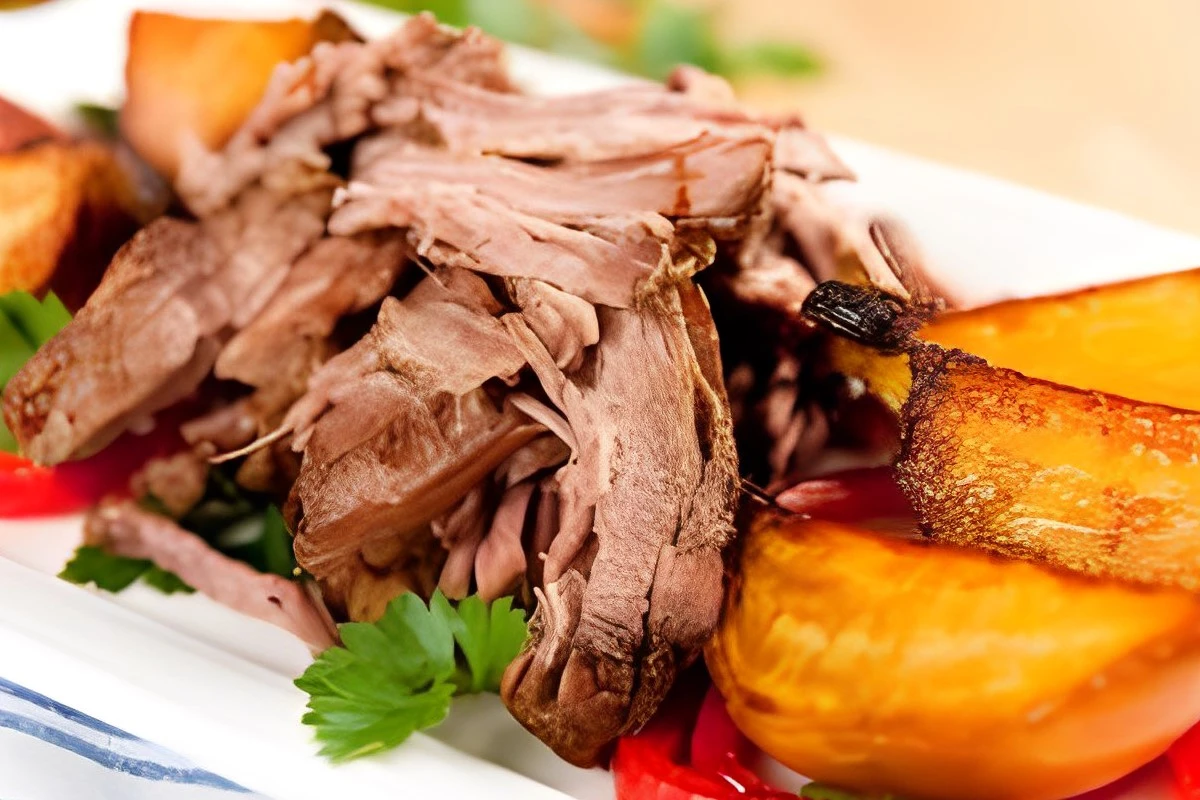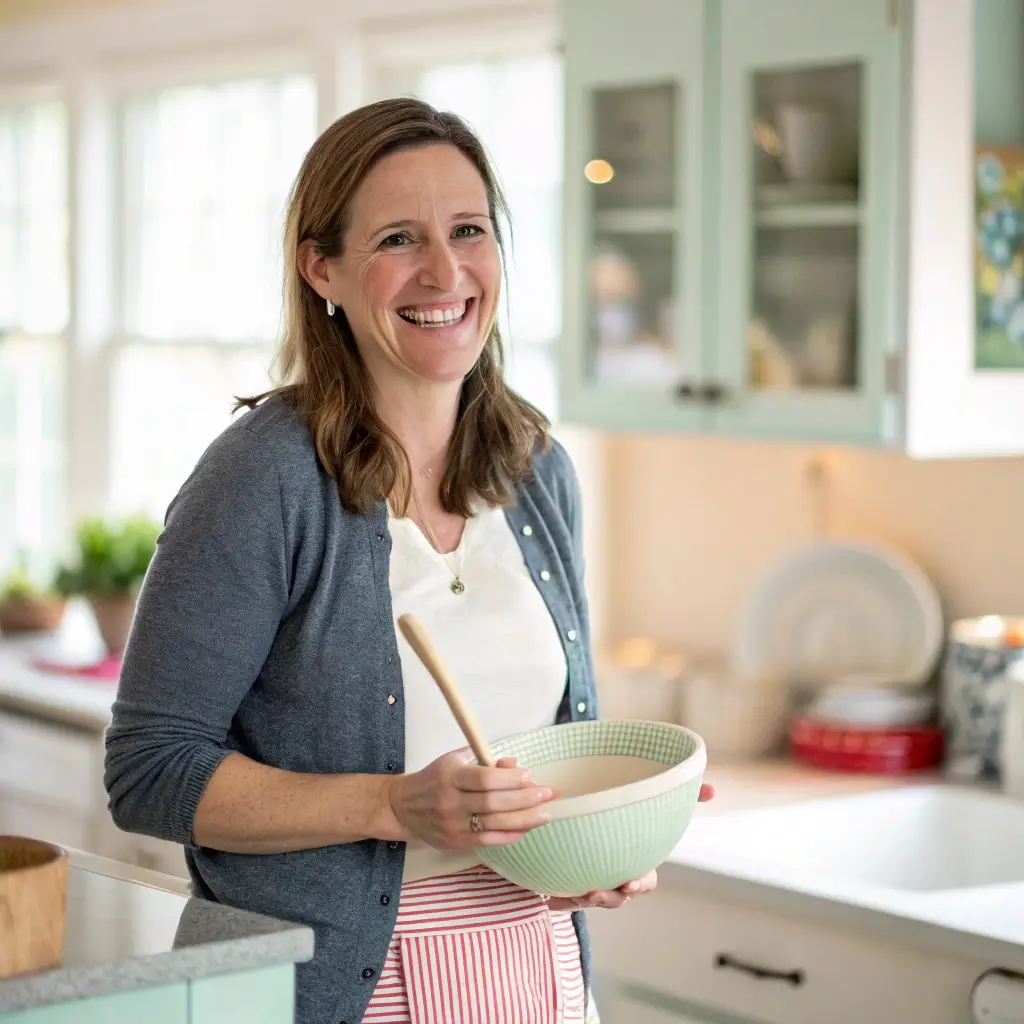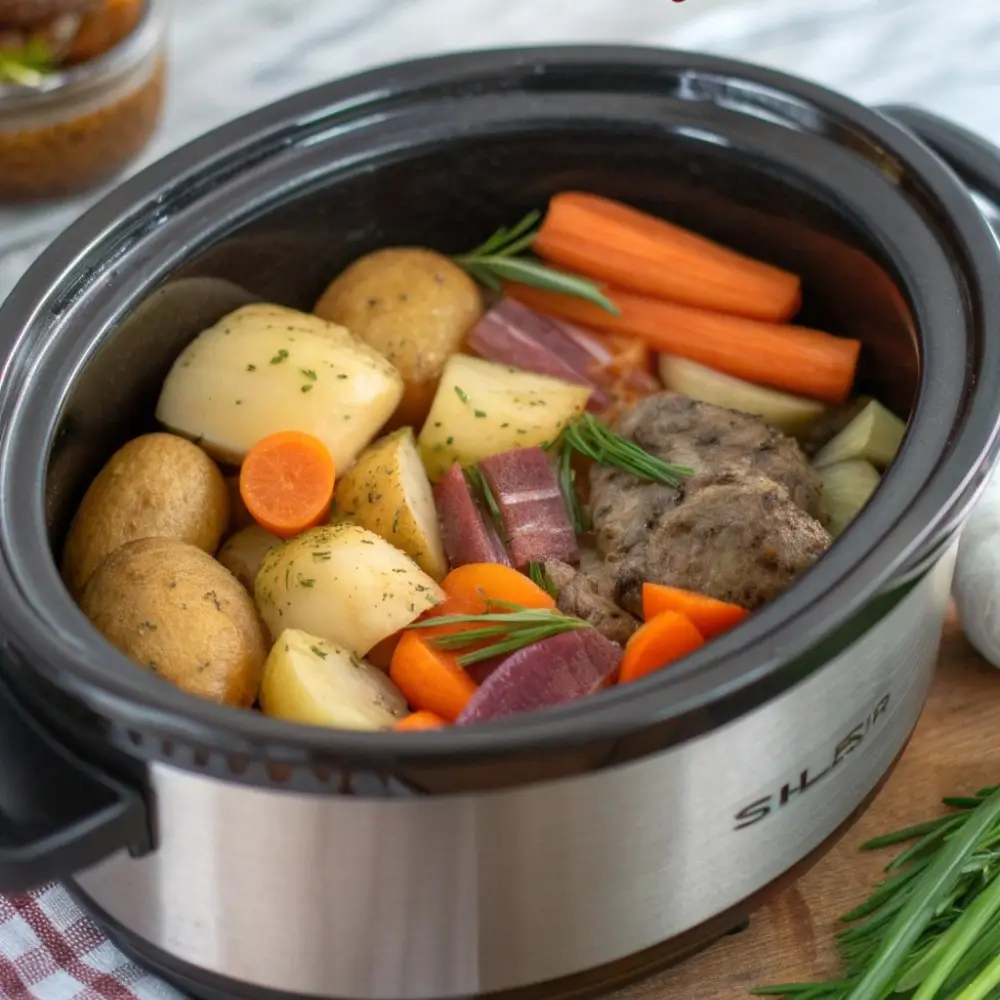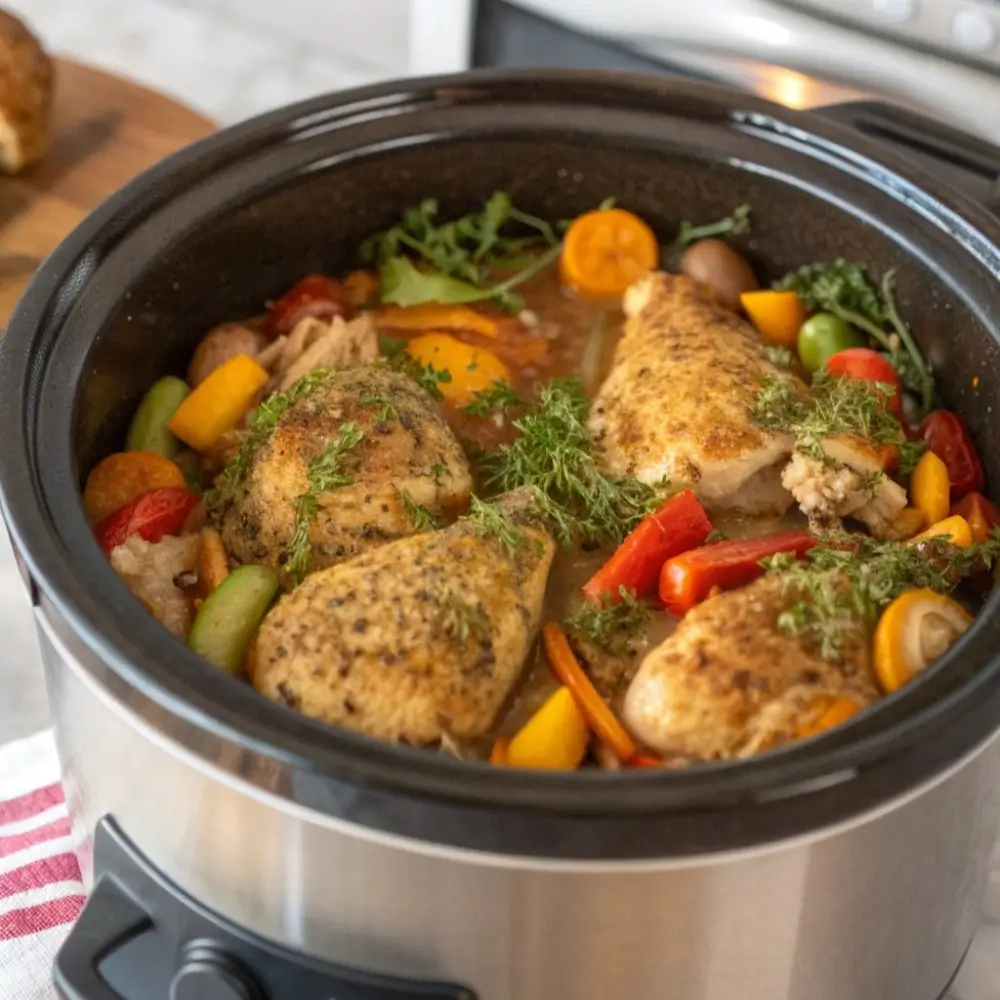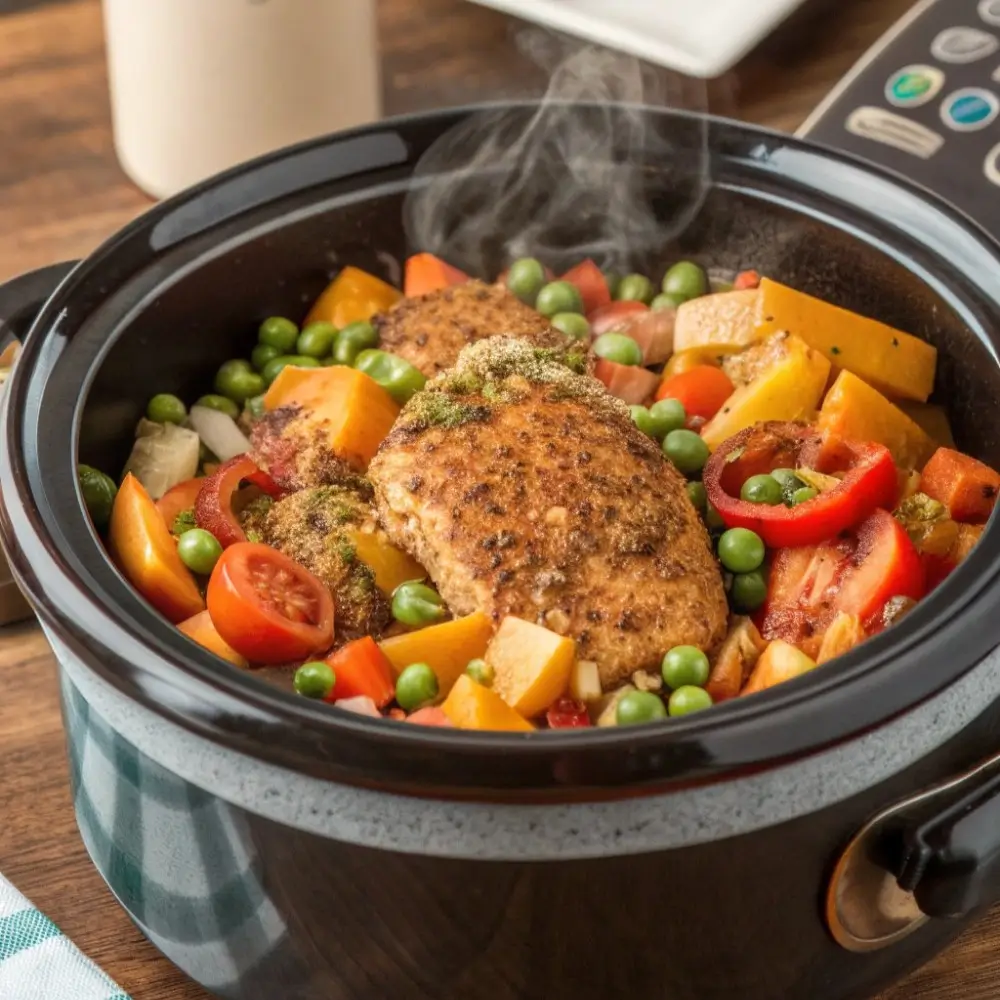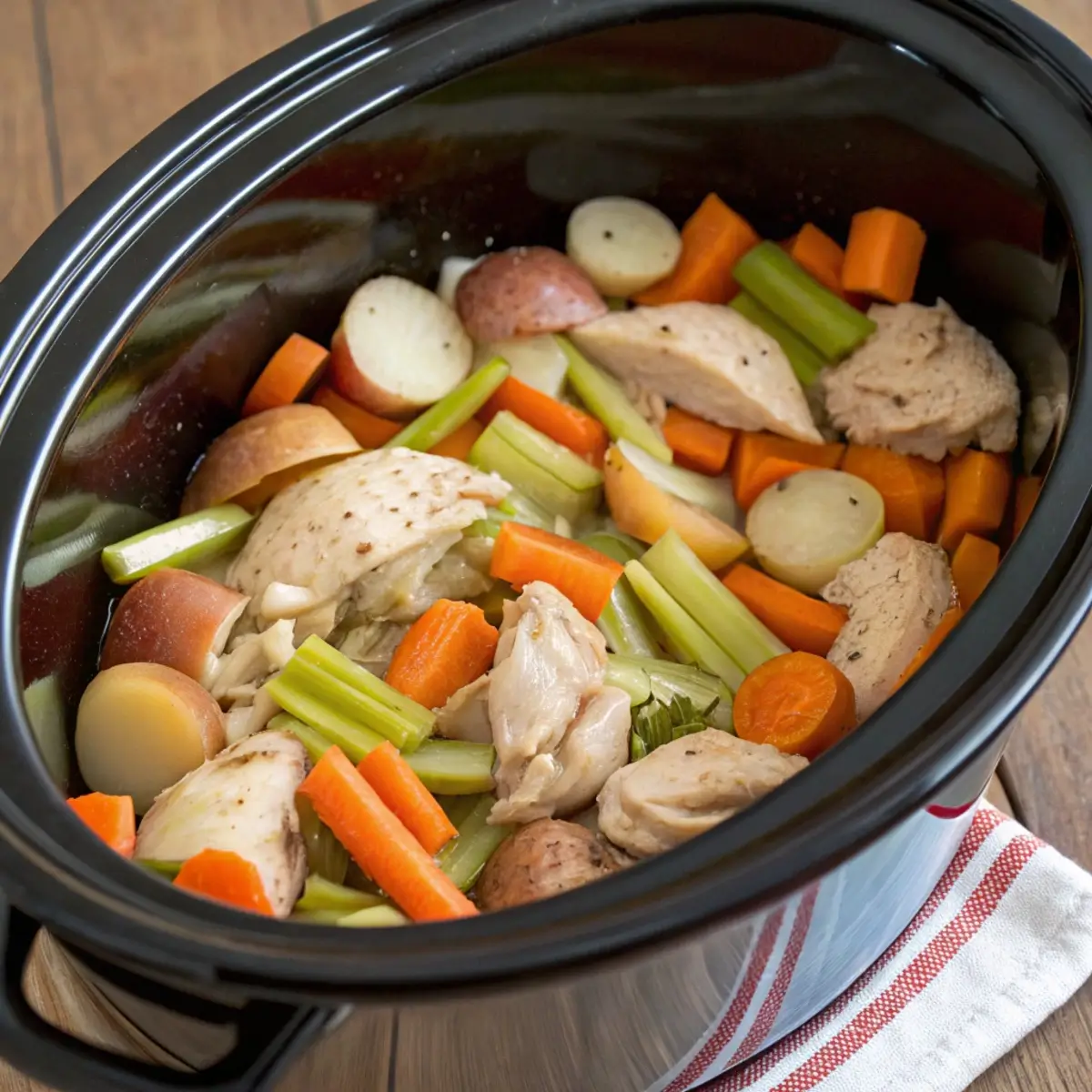Table of Contents
“Embarking on our culinary journey, we confront a crucial question: Should you season pot roast before cooking to enhance its comforting essence? This article delves into how seasoning before cooking influences the texture, aroma, and flavor, uncovering the transformative power of spices on meat to create a dinner masterpiece.”
Introduction to Pot Roast
“Pot roast, a beacon of comfort food, marries hearty flavors with straightforward preparation. The debate over should you season pot roast before cooking introduces a layer of complexity to its simplicity, with answers rooted in culinary science and varied personal preferences.”
Why Seasoning Matters
“Seasoning proves indispensable. It not only elevates taste but also tenderizes the meat, ensuring every bite is a delight. Let’s unravel the kitchen alchemy and scientific insights that make a pot roast extraordinary.”
The Importance of Seasoning
Why Seasoning Matters
In the symphony of flavors that make up a pot roast, seasoning takes center stage. It’s not just about making the meat taste better; it’s about transforming it. Seasoning, particularly the use of salt, acts as a tenderizer, breaking down the muscle fibers of the meat, leading to a more succulent and enjoyable eating experience. But, oh, it doesn’t stop there! Seasoning adds depth and complexity, layering flavors that meld together during the cooking process to create a dish that is truly greater than the sum of its parts.
Enhancing Pot Roast Flavor
Imagine this: before the pot roast even hits the heat, it’s given a generous rub-down with a blend of spices and herbs. This isn’t just for kicks; it’s a critical step in flavor development. The salt draws out moisture, allowing the flavors of garlic, rosemary, thyme, and perhaps a dash of paprika to penetrate deeply into the meat. This process, known as osmosis, isn’t just fancy cooking talk; it’s the science behind why a well-seasoned roast is leagues ahead in taste and tenderness.
The Science Behind Seasoning Meat
Now, let’s geek out a bit, shall we? When salt is applied to meat, it dissolves into the moisture on the surface, forming a brine that the meat then reabsorbs. This brine breaks down protein structures, enhancing the meat’s ability to retain moisture and tenderize. This means that every bite isn’t just flavorful; it’s juicier and more tender. It’s a game of patience and precision, where the early addition of seasoning sets the stage for culinary excellence.
So, when faced with the question of whether to season your pot roast before cooking, consider the role of seasoning in not just adding flavor, but in transforming the texture of the meat. It’s a step that pays dividends in the final dish, making the case for seasoning not just compelling, but essential to achieving pot roast perfection.
Preparing the Pot Roast
Selecting the Right Cut
Choosing the right cut of beef is akin to picking the perfect canvas for your masterpiece. Not all cuts are created equal when it comes to pot roast. The chuck roast reigns supreme in the realm of pot roasts, thanks to its rich marbling and connective tissues. These elements, under the low and slow cooking process, transform into melt-in-your-mouth tenderness and flavor. It’s a cut that not only absorbs the seasoning well but also rewards patience with unparalleled texture and depth.
To Season or Not to Season
Herein lies the rub—quite literally. To season or not to season before cooking is a question that touches on the very essence of flavor building. On one hand, seasoning ahead of time allows the salt and spices to permeate the meat, enhancing flavor from within. It’s not just a superficial layer of taste; it’s a deep, pervasive richness that only time can achieve.
Yet, some may argue, why rush? There’s beauty in the slow melding of flavors as the roast cooks. But, let’s not forget the wisdom of culinary experts who advocate for seasoning as an essential step in preparation. By seasoning ahead of cooking, you’re not just salting your meat; you’re setting the stage for a symphony of flavors that will deepen and develop over time.
When it comes to preparing your pot roast, the choice to season before cooking is not just a matter of taste—it’s a commitment to excellence in every bite. Whether you choose to rub your roast with a blend of herbs and spices hours before it hits the oven, or even the night before, you’re ensuring that every fiber of the meat is infused with flavor. This isn’t just cooking; it’s crafting a culinary experience that begins long before the roast ever sees the heat.
Seasoning Techniques
Crafting the perfect seasoning blend for your pot roast is not unlike painting a masterpiece. Each spice and herb you add brings a unique color to the flavor palette, enhancing the overall experience of the dish. Here, we delve into the art of seasoning, sharing techniques that will ensure your pot roast is nothing short of spectacular.
Crafting Your Spice Blend
The journey to a perfect pot roast begins with crafting your spice blend. Combining salt, garlic powder, onion powder, black pepper, thyme, rosemary, and paprika creates a rich flavor base. This mix isn’t just about combining spices; it’s about creating a balance that complements the meat’s natural taste.
Understanding the Role of Each Spice
Each spice in your blend acts like a note in a melody, with proportions determining the final harmony. Salt is fundamental, drawing out moisture and enhancing flavor. Garlic and onion powders add depth, while thyme and rosemary bring aromatic elements that elevate the roast.
By dividing the content with these subheadings, readers can easily navigate through the information and grasp the key points about creating a spice blend for pot roast.
Rubbing the Meat
Once your spice blend is ready, the next step is to rub it into the meat. This is more than a mere application; it’s a massage, ensuring every nook and cranny of the roast is coated in your flavorful concoction. This intimate interaction between spice and meat is crucial, as it ensures the flavors are not just on the surface but are set to penetrate deeply during cooking.
The act of rubbing also allows for the salt to begin working its magic on the proteins, starting the tenderization process even before cooking. Whether you choose to season your roast just before cooking or let it marinate overnight, ensure that the spice blend is evenly distributed for maximum flavor impact.
Searing for Flavor
Ah, searing—the moment when spices meet heat and begin to transform. Heating a dash of olive oil in a heavy pan and then searing the roast on all sides does more than just create a visually appealing crust. This crucial step locks in flavors and sets the stage for the slow cooking process, where the deep browning adds a complex layer of taste that cannot be achieved through roasting alone.
The sear is not just about texture; it’s a flavor foundation, ensuring that each bite of the pot roast is infused with a rich, caramelized depth that is both distinctive and delightful.
By following these seasoning techniques, you’re not just preparing a meal; you’re crafting an experience. A well-seasoned and seared pot roast promises a journey through flavors that are as rich and complex as they are comforting and familiar.
Cooking Methods
Once your pot roast is seasoned and seared to perfection, choosing the right cooking method becomes the next step in crafting a dish that’s not just good, but unforgettable. The slow simmer of a pot roast in the oven or the gentle, consistent heat of a slow cooker both offer paths to tenderness, each with its own unique benefits.
The Ease of Slow Cooking
Interestingly, slow cooking is celebrated for its ‘set it and forget it’ approach. This method allows flavors to meld and meat to tenderize with minimal attention. Consequently, it’s perfect for those seeking convenience without sacrificing taste.
The Precision of Oven Roasting
On the other hand, oven roasting requires a more active role from the cook. It skillfully uses dry heat to create a crusty exterior and a tender interior. Therefore, this method demands vigilance but, in return, rewards with a visually appealing and flavorful pot roast.
Choosing the Right Method for You
The decision to season pot roast before cooking greatly affects flavor and texture. Slow cooking enhances flavor and tenderness, ideal when time allows. Oven roasting, preferred for its texture, demands more engagement but offers a unique culinary experience.
Regardless of the selected method, the essence of a perfect pot roast is the low and slow approach to cooking. This method gently breaks down the collagen in the meat, turning a tough cut into a tender, fall-apart masterpiece. The gradual blending of flavors from herbs, spices, and aromatics endows the roast with a richness and complexity that demands patience.
Ultimately, the query should you season pot roast before cooking is crucial in guiding your approach to this classic dish. Whether opting for the simplicity of a slow cooker or the precision of an oven, the goal remains to serve a succulent, tender pot roast. By understanding the nuances of each cooking technique, you can craft a pot roast that becomes a cherished meal for everyone gathered at your table.
Common Mistakes to Avoid
Overcooking and Undercooking
Finding the right cooking time is crucial. Overcooking dries out the meat. Undercooking leaves it tough. Aim for a balance. Use a thermometer to check doneness.
Neglecting Flavor and Seasoning
Seasoning is key. It turns good into great. Don’t skimp on it. Season well before cooking. Adjust the liquid’s taste as you go.
Vegetable Mishaps
Timing is crucial for vegetables. Add them at the right moment. This prevents mushiness or undercooking. Root vegetables need careful timing.
By paying attention to these points, you can avoid common pitfalls. This ensures your pot roast is flavorful and tender.
FAQs Simplified
Should pot roast reach room temperature before cooking?
Yes, let it sit out for 30 minutes. This ensures even cooking.
Is it possible to over-season pot roast?
Yes. Use salt and spices carefully to avoid overpowering the meat. Aim for 1 teaspoon of salt per pound of meat.
How should I store and reheat leftovers?
Keep leftovers in an airtight container in the fridge. Reheat gently with a bit of broth to keep the meat moist.
Can I add different vegetables or ingredients?
Definitely! Feel free to experiment with various vegetables and seasonings. Adding balsamic vinegar or tomato paste can boost flavor.
Conclusion
In our journey to uncover whether should you season pot roast before cooking, we’ve melded culinary art with science. We’ve discovered that seasoning enhances both flavor and texture significantly. Choosing the right cut, mastering the art of seasoning techniques, and opting for the ideal cooking method are crucial steps to crafting an unforgettable pot roast.
Seasoning the pot roast before cooking commits us to creating a meal that’s not only flavorful but also memorable. By addressing common pitfalls and answering frequently asked questions, we’ve laid a solid foundation for a pot roast that elevates beyond mere sustenance into a rich culinary experience.
Deciding whether to season pot roast before cooking is key to its perfection. It’s not just a meal; it’s an experience of flavors, textures, and aromas. Remember, seasoning early can transform a good meal into a great one, making your pot roast tender, flavorful, and a cause for joy at the table
